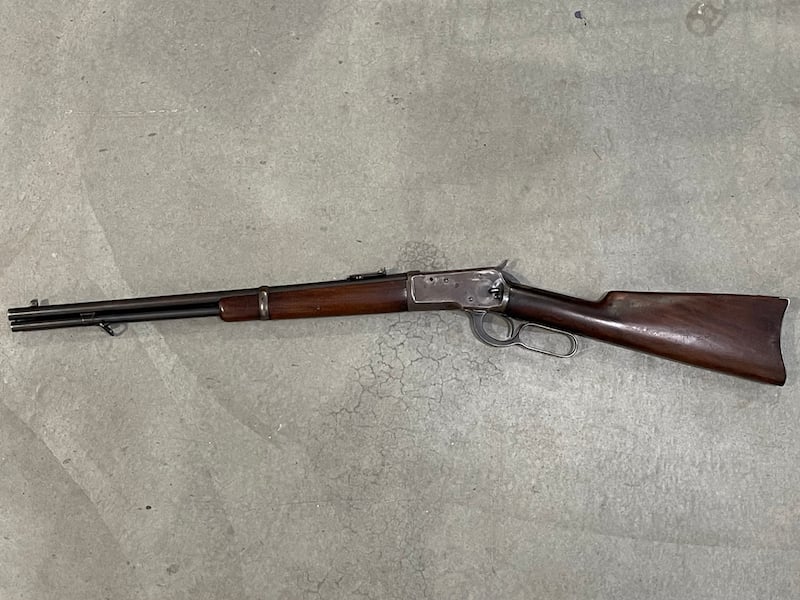When you think of the firearms that have stood the test of time and are almost the poster child for an era of American history, the name Winchester is near the top of the list. You probably thought of the Colt Peacemaker revolver before the Winchester rifle, but when it comes to rifles, Winchester was the king. Thanks to solid design, price point, and Hollywood, the Winchester Model 1892 legacy continues.

History of the Winchester Model 1892
The Winchester Model 1892 was the brainchild of the great John Moses Browning, who was tasked with creating an improved lever action to go up against the Marlin. Reportedly Browning was able to deliver a working prototype in just two weeks after originally he had been given a month to create the rifle. The Model 1892 replaced the venerable Model 1873, or the Gun that Won the West, and was available in pistol calibers.
The Model 92 became famous for its lighter weight, low recoil, and easy handling. It was a light and slim rifle when compared to Browning’s larger Model 1886 but had the pistol caliber rounds like the Model 1873. The Model 92 was incredibly popular and stayed in production for nearly 50 years, eventually ending production in 1938. Throughout its production life, the rifle was carried to the North Pole by Admirals, used by explorers like Percy Fawcett, hunters like jaguar hunter Sasha Siemel, and used during wars from the Indian wars through World War I. Over one million Model 92 lever action rifles were produced by Winchester during those years.
What calibers did the Winchester Model 1892 come in?
The Model 1892 did not have a set standard as far as calibers were concerned. Originally, the Model 92 was available in .32-20, .38-40, and .44-40 Winchester centerfire loads (WCF), and then in 1895 the company added a .25-20 WCF round model, which I have. Winchester would come to offer the Model 92 in different calibers over the life of the rifle, including custom options, and in later years offering it in .218 Bee for a short time. Of all the calibers, the .44-40 would be the most popular.

A side note about the .25-20 ammunition, in case you were like me and didn’t know a whole lot about the particular round. The round was originally developed by Marlin for the Marlin Model 1889, so Winchester created its own version of the ammunition and rifle as competition for the Marlin. The .25-20 Winchester, or .25-20 WCF, was developed around 1895 specifically for the Winchester Model 92 rifle. At its core, the .25-20 WCF round is based on a necked down .32-20 Winchester.
During its development, the round was a popular choice for varmint and small game hunters. Ultimately, the .25-20 round would lose favor with hunters due to the light bullet construction and lower ballistic capabilities when compared to other rounds available. Currently, a few loads of .25-20 are on the market, but the ones that are for sale can be quite spendy per round.

The Iconic Model 1892
Even though the Winchester Model 1866 and 1873 rifles were the true firearms that Won the West, the Model 1892 became the icon of the West from its place in popular culture. The Model 92 gained its first wave of infamy thanks to its use in Wild West shows by people like Annie Oakley and others. Annie Oakley preferred her smooth-bore Model 92 when she traveled with Buffalo Bill’s Wild West Show, domestically as well as abroad.
But the Model 92 wasn’t popular just because of Annie Oakley. Hollywood used the Model 92 in a whole pile of Westerns, thanks in large part because it looked the part of a Western rifle because of course, it did. It was also readily accessible to prop houses and the Model 92 would accept the 5-in-1 blank cartridges, regardless of which caliber the rifle was chambered in.
Because of this, many of Hollywood’s Western movies and shows used the Model 92. It was a favorite of John Wayne’s and there was rarely a Wayne Western that didn’t have the rifle somewhere in the film. The rifle was on full display in “Stagecoach,” “The Ringo Kid,” “True Grit,” and many other Spaghetti Westerns in various configurations.

A Piece of Family History
I happen to have a Winchester Model 1892 chambered in .25-20. The rifle I have has a 20” barrel, unlike the Mare’s Leg variations with a cut-down barrel. The rifle still has the original wood stock and forend, Winchester sights, and markings.
Looking at the rifle, it is missing the saddle ring and ring on the stock for the sling. But it still has the sling ring on the barrel. Holes at the top of the receiver on one side appear to be for a scope mount, which makes sense given the action opens on the top so you wouldn’t want to obstruct that area. Overall, the rifle has normal wear and tear that you’d expect to see on a rifle of its age, but still in very good condition.

The information I was able to gather based on the serial number originally showed a manufacture date between 1921 and 1928. Upon further investigation, thanks to Winchester’s online serial number search, it was shown the rifle was one of roughly 12,000 produced in 1924. With that date nailed down, I was able to sort out that the rifle was purchased in northeastern Montana thanks to family history.
Doing the research for the rifle was a great adventure. I knew the Winchester Model 92 is a great piece of American history if not a piece of family history. I know that the rifle I have is not a rare piece, but being able to nail down and track its history, makes the rifle a great piece in our collection.


